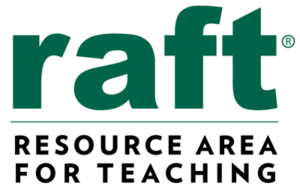Flash Splash
Students can race against each other, themselves, or the clock to see how many wells they can fill!
Standards
Idea Sheets are cross-referenced to subjects listed in the Common Core, Next Generation Science Standards, and California Content Standards.
Science and Engineering Practices: 1. Asking Questions and Defining Problems 2. Developing and Using Models 3. Planning and Carrying Out Investigations 4. Analyzing and Interpreting Data 5. Using Mathematics and Computational Thinking 6. Constructing Explanations and Designing Solutions 7. Engaging in Argument from Evidence 8. Obtaining, Evaluating, and Communicating Information ||Next Generation Science Standards||Kindergarten||Science and Engineering Practices|||K.CC.1. Count to 100 by ones and by tens.||Common Core Mathematics||Kindergarten||Counting And Cardinality||Know Number Names And The Count Sequence|||K.CC.4. Understand the relationship between numbers and quantities; connect counting to cardinality.||Common Core Mathematics||Kindergarten||Counting And Cardinality||Count To Tell The Number Of Objects|||K.CC.5. Count to answer “”how many?”” questions about as many as 20 things arranged in a line, a rectangular array, or a circle, or as many as 10 things in a scattered configuration; given a number from 1?20, count out that many objects.||Common Core Mathematics||Kindergarten||Counting And Cardinality||Count To Tell The Number Of Objects|||K.CC.6. Identify whether the number of objects in one group is greater than, less than, or equal to the number of objects in another group, e.g., by using matching and counting strategies.1||Common Core Mathematics||Kindergarten||Counting And Cardinality||Compare Numbers|||Science and Engineering Practices: 1. Asking Questions and Defining Problems 2. Developing and Using Models 3. Planning and Carrying Out Investigations 4. Analyzing and Interpreting Data 5. Using Mathematics and Computational Thinking 6. Constructing Explanations and Designing Solutions 7. Engaging in Argument from Evidence 8. Obtaining, Evaluating, and Communicating Information ||Next Generation Science Standards||Grade 1||Science and Engineering Practices |||Science and Engineering Practices: 1. Asking Questions and Defining Problems 2. Developing and Using Models 3. Planning and Carrying Out Investigations 4. Analyzing and Interpreting Data 5. Using Mathematics and Computational Thinking 6. Constructing Explanations and Designing Solutions 7. Engaging in Argument from Evidence 8. Obtaining, Evaluating, and Communicating Information ||Next Generation Science Standards||Grade 2||Science and Engineering Practices|||2.G.2. Partition a rectangle into rows and columns of same-size squares and count to find the total number of them.||Common Core Mathematics||Grade 2||Geometry||Reason With Shapes And Their Attributes|||Science and Engineering Practices: 1. Asking Questions and Defining Problems 2. Developing and Using Models 3. Planning and Carrying Out Investigations 4. Analyzing and Interpreting Data 5. Using Mathematics and Computational Thinking 6. Constructing Explanations and Designing Solutions 7. Engaging in Argument from Evidence 8. Obtaining, Evaluating, and Communicating Information ||Next Generation Science Standards||Grade 3||Science and Engineering Practices
1.1 Compare two or more sets objects (up to ten objects in each group), and identify which set is equal to, more than, or less than the other.||CA Mathematics||Grade Kindergarten||01. Number Sense||1.0 Students understand the relationship between numbers and quantities (i.e., that a set of objects has the same number of objects in different situations, regardless of its position or arrangement).|||1.2 Count, recognize, represent, name and order a numbers of objects (up to 30).||CA Mathematics||Grade Kindergarten||01. Number Sense||1.0 Students understand the relationship between numbers and quantities (i.e., that a set of objects has the same number of objects in different situations, regardless of its position or arrangement).|||1.3 Know that the larger numbers describe sets with more objects in them than smaller numbers have.||CA Mathematics||Grade Kindergarten||01. Number Sense||1.0 Students understand the relationship between numbers and quantities (i.e., that a set of objects has the same number of objects in different situations, regardless of its position or arrangement).|||4. Scientific progress is made by asking meaningful questions & conducting careful investigations. As a basis for understanding this concept, and to address the content of the other strands, students will develop questions & perform investigations.||CA Science||Grade Kindergarten||04. Investigation and Experimentation|||4. Scientific progress is made by asking meaningful questions and conducting careful investigations. As a basis for understanding this concept and addressing the content in the other three strands, students should develop their own questions and perform investigations. Students will:||CA Science||Grade 1||04. Investigation and Experimentation|||4. Scientific progress is made by asking meaningful questions and conducting careful investigations. As a basis for understanding this concept and addressing the content in the other three strands, students should develop their own questions and perform investigations. Students will:||CA Science||Grade 2||04. Investigation and Experimentation|||5. Scientific progress is made by asking meaningful questions & conducting careful investigations. As a basis for understanding this concept, and to address the content of the other strands, students will develop questions and perform investigations.||CA Science||Grade 3||04. Investigation and Experimentation
- Physical Science
- Pre-K
- Grades K-2
- Grades 3-5
- Science
- Math
